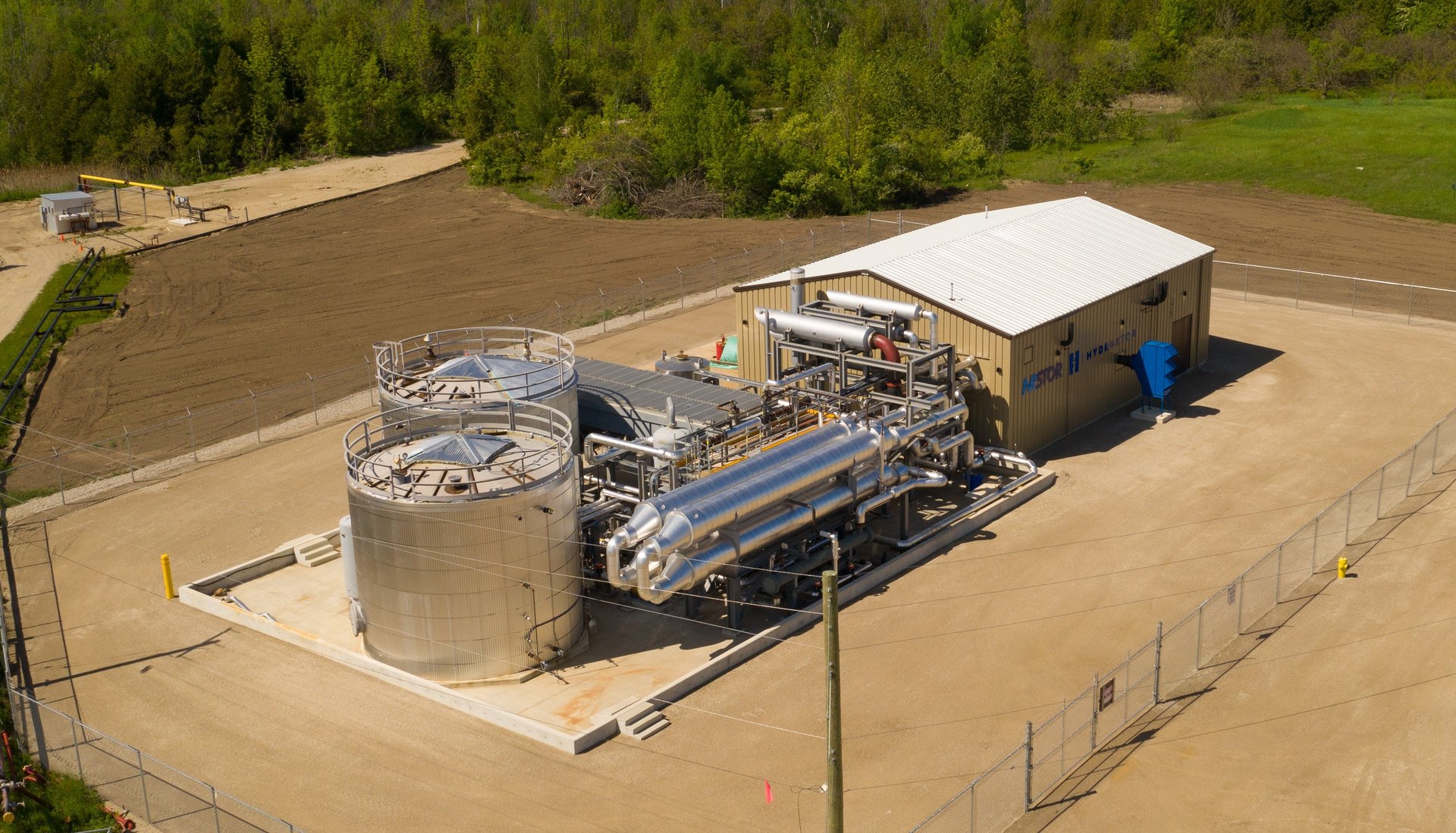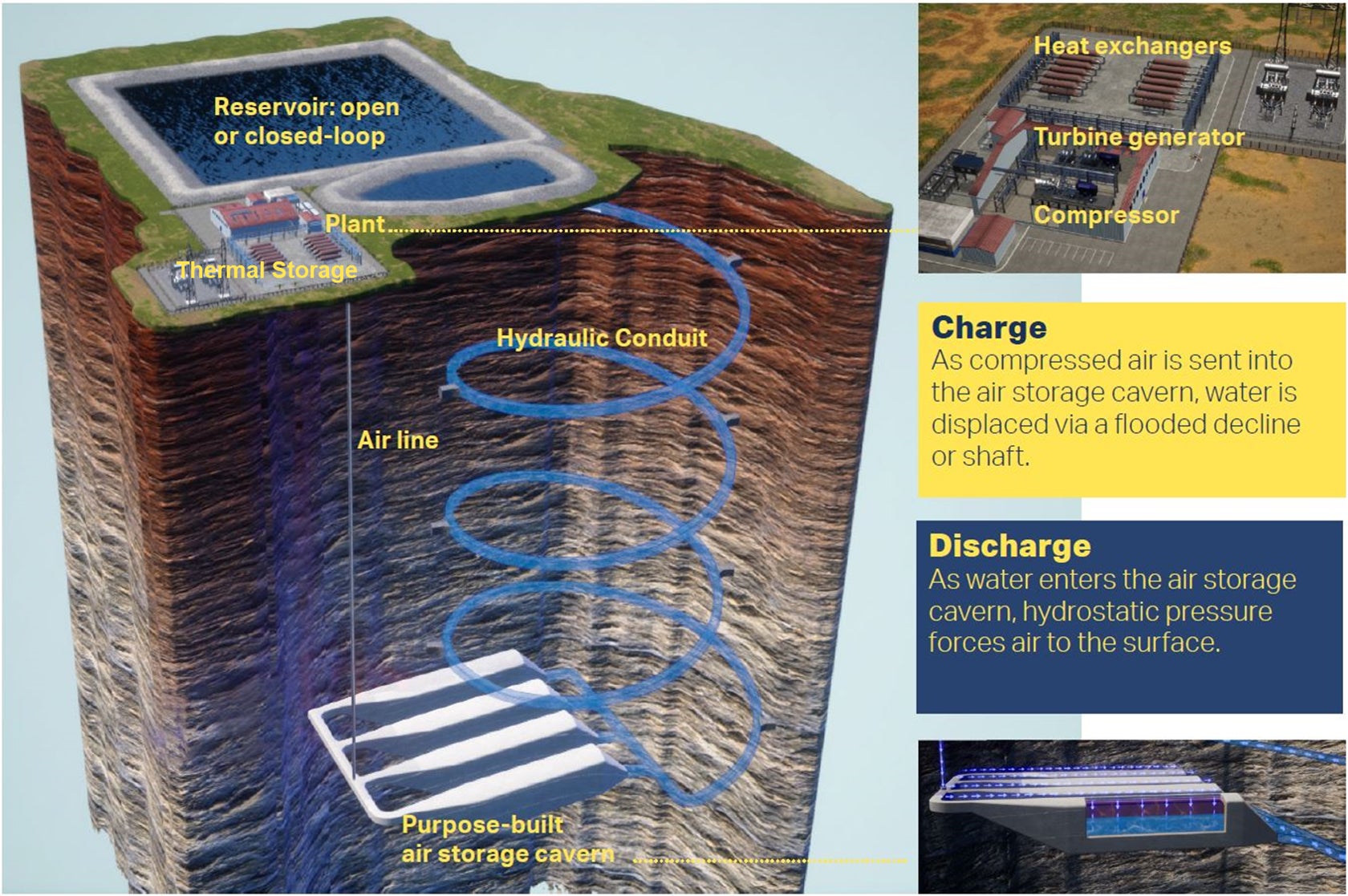Storing energy in compressed air could finally become cheap enough for the big time
Solar and wind power provide carbon-free electricity. But their generation is tied to the vagaries of nature. That is why, to achieve a zero-carbon electric grid, technologies that can store that energy for when it’s needed will have to play a big role.


Solar and wind power provide carbon-free electricity. But their generation is tied to the vagaries of nature. That is why, to achieve a zero-carbon electric grid, technologies that can store that energy for when it’s needed will have to play a big role.
While lithium-ion batteries have started to meet some of the need for storage, the metals needed to make them are not plentiful enough for large-scale energy hoarding. So entrepreneurs around the world have been looking for alternatives.
At Quartz, we’ve written about companies working on reversible sulfur power-plants, injecting water underground, running “refrigerators on steroids,” and using stacked concrete blocks—all with the purpose of storing excess renewable energy. Add to that list Hydrostor, a Canadian startup that’s storing energy by injecting compressed air into deep underground caverns.
Founded in 2010, Hydrostor’s core idea isn’t a new one: First, use excess electricity to run compressors and trap the pressurized air in a container. Then, to recover the energy, run the trapped air through a turbine that generates power. Small-scale compressed-air energy storage has been successfully used as a backup to restart power plants. The UK startup Highview Power is storing energy in “liquid air”—when you compress a gas enough, it turns liquid—and it has built a pilot project to test the idea.
There have been failures, too. The startup Airlight Energy built a working prototype in the Swiss Alps, but hasn’t found a commercial partner to help it scale up. The US startup LightSail Energy spent $80 million, but wasn’t able to develop an economically viable technology. Two startups, SustainX and General Compression, were forced to merge to save costs but seem to be no longer active.
Learning from these examples, Hydrostor has built something it believes can make compressed-air energy storage economically viable.
Quartz can reveal that Hydrostor’s technology will now have the backing of the oil-and gas services and equipment company Baker Hughes, which has, along with other investors, participated in a $17 million equity round. Baker Hughes has a goal to reach net-zero emissions by 2050, and sees Hydrostor as a way to move away from providing services to the fossil fuel sector alone.
So far, the startup has built one pilot project at 1 MW scale, and has another 2 MW project coming online “within weeks”—both of which are in Ontario, Canada. It has received government funding to build a 5 MW pilot in Australia, which will be completed late in 2020. So far the company has spent about $30 million to get to this stage.
Now, Hydrostor is bidding for 300 MW and 500 MW projects in North America, which would require large sums of capital. To aid the bidding process, Hydrostor has separately received $20 million in development funds from Meridiam, an asset manager that supports building out clean-energy infrastructure.
Simple physics
Here’s how Hydrostor’s technology works. Excess renewable electricity is used to run compressors. Physics dictates that, when compressed, a gas will heat up. Hydrostor captures this heat and stores it in insulated hot water tanks. The compressed gas is then injected into underground caverns as deep as 600 meters.
Then the process is reversed. When the company needs that energy back, it releases the compressed air, adds the stored heat, and runs the gas through air turbines to generate electricity.
A few additional features improve the system’s efficiency. The underground gas cavern is filled with water, which is connected via pipes to a surface-level reservoir. When compressed air fills the cavern, it pushes the water through the pipe and up to the ground. The process is reversed when the compressed air is used to produce power. This balancing act ensures that the compressed air always remains under the same pressure. That means the compressors run to do the same job all the time, and can thus be tweaked to be as energy efficient as possible.

That said, a Hydrostor plant can only recover about six units of electricity for every 10 units it stores. Each step—compression, heat exchange, water balancing—offers an opportunity for energy loss. Compared to lithium-ion batteries, which are about 90% efficient, Hydrostor’s 60% efficiency isn’t great. But it exceeds other compressed-air energy storage systems, which have an efficiency closer to 40%.
Another advantage, Hydrostor CEO Curtis VanWalleghem explained, is that building the energy-storage plant doesn’t require new technology. Baker Hughes will supply compressors and air turbines. Digging up underground reservoirs to store compressed gas is something the oil and gas industry has perfected over the last century. And Hydrostor has already tested the entire system at its pilot facilities, helping it work out the kinks.
The next step is to build a large plant.
Bigger is better
“We see ourselves as the alternative to natural-gas power plants,” says VanWalleghem. “If someone says they need 24 hours or 48 hours of run time, we can do that cost effectively.”
The cost to build one of these plants is about the same as that of a natural-gas power plant. A 250 MW power system with 2,000 MWh of energy storage capacity (that is, providing 8 hours of electricity) costs about $440 million. It comes out to approximately $220 per kWh—a price point lithium-ion batteries can likely compete with (they cost between $200 and $400 per kWh these days).
The advantage to this approach, however, is that every bit of additional storage capacity costs very little. You only have to increase the size of the cavern underground. So a 500 MW power system with 6,000 MWh of energy storage capacity (providing electricity for 12 hours) will cost less than $100 per kWh—a price point that lithium-ion batteries are unlikely to hit for quite some time.
Having to use an underground cavern means Hydrostor can’t build its plant just anywhere. But VanWalleghem says that, unlike the strict geological needs of oil-and-gas companies, compressed air can be stored in many types of rock formations. That means Hydrostor can technically build its plants on 70% of the planet’s landmass.
Although the proportion of variable renewables globally is still quite small, there are big markets such as California, Australia, and many countries in Europe that often can deliver energy drawn from 50% renewable sources—sometimes even 100% renewables. In fact, at certain times of the day, these markets’ electricity prices can go into the negative: The utility is essentially forced to pay people to use their electricity.
Many more countries in the world will reach this point of renewable penetration, and soon. Hydrostor is betting that utilities in these countries will find it cheaper to build underground batteries than to waste away renewable electricity. The quicker we get there, the greater Hydrostor’s chances of success.
This story is part of Covering Climate Now, a global collaboration of more than 250 news outlets to strengthen coverage of the climate story.